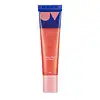What's inside
What's inside
 Key Ingredients
Key Ingredients

No key ingredients
 Benefits
Benefits

 Concerns
Concerns

 Ingredients Side-by-side
Ingredients Side-by-side

Cera Microcristallina
Emulsion StabilisingOctyldodecanol
EmollientHydrogenated Polydecene
EmollientCetyl Palmitate
EmollientRicinus Communis Seed Oil
MaskingMyristyl Myristate
EmollientVp/Hexadecene Copolymer
Cetearyl Alcohol
EmollientPolyglyceryl-3 Diisostearate
EmulsifyingButyrospermum Parkii Butter
Skin ConditioningCaprylic/Capric Triglyceride
MaskingPentaerythrityl Tetraisostearate
EmollientVp/Eicosene Copolymer
C20-40 Alkyl Stearate
Skin ConditioningPanthenol
Skin ConditioningCopernicia Cerifera Cera
EmollientCera Alba
EmollientWater
Skin ConditioningGlycerin
HumectantLimonene
PerfumingLinalool
PerfumingBenzyl Alcohol
PerfumingBenzyl Benzoate
AntimicrobialCitral
PerfumingParfum
MaskingCera Microcristallina, Octyldodecanol, Hydrogenated Polydecene, Cetyl Palmitate, Ricinus Communis Seed Oil, Myristyl Myristate, Vp/Hexadecene Copolymer, Cetearyl Alcohol, Polyglyceryl-3 Diisostearate, Butyrospermum Parkii Butter, Caprylic/Capric Triglyceride, Pentaerythrityl Tetraisostearate, Vp/Eicosene Copolymer, C20-40 Alkyl Stearate, Panthenol, Copernicia Cerifera Cera, Cera Alba, Water, Glycerin, Limonene, Linalool, Benzyl Alcohol, Benzyl Benzoate, Citral, Parfum
Lanolin
EmollientTheobroma Cacao Seed Butter
EmollientEthylhexyl Methoxycinnamate
UV AbsorberOctocrylene
UV AbsorberCera Alba
EmollientButyl Methoxydibenzoylmethane
UV AbsorberButyrospermum Parkii Butter
Skin ConditioningRicinus Communis Seed Oil
MaskingErigeron Annuus Flower Oil
Skin ConditioningOlea Europaea Fruit Oil
MaskingAroma
Tocopherol
AntioxidantCalcium Aluminum Borosilicate
Silica
AbrasiveAluminum Hydroxide
EmollientTin Oxide
AbrasiveBenzyl Alcohol
PerfumingCI 77891
Cosmetic ColorantCI 15850
Cosmetic ColorantCI 45410
Cosmetic ColorantCI 77491
Cosmetic ColorantLanolin, Theobroma Cacao Seed Butter, Ethylhexyl Methoxycinnamate, Octocrylene, Cera Alba, Butyl Methoxydibenzoylmethane, Butyrospermum Parkii Butter, Ricinus Communis Seed Oil, Erigeron Annuus Flower Oil, Olea Europaea Fruit Oil, Aroma, Tocopherol, Calcium Aluminum Borosilicate, Silica, Aluminum Hydroxide, Tin Oxide, Benzyl Alcohol, CI 77891, CI 15850, CI 45410, CI 77491
 Reviews
Reviews

Ingredients Explained
These ingredients are found in both products.
Ingredients higher up in an ingredient list are typically present in a larger amount.
Benzyl Alcohol is most commonly used as a preservative. It also has a subtle, sweet smell. Small amounts of Benzyl Alcohol is not irritating and safe to use in skincare products. Most Benzyl Alcohol is derived from fruits such as apricots.
Benzyl Alcohol has both antibacterial and antioxidant properties. These properties help lengthen the shelf life of products. Benzyl Alcohol is a solvent and helps dissolve other ingredients. It can also improve the texture and spreadability.
Alcohol comes in many different forms. Different types of alcohol will have different effects on skin. This ingredient is an astringent alcohol.
Using high concentrations of these alcohols are drying on the skin. They may strip away your skin's natural oils and even damage your skin barrier. Astringent alcohols may also irritate skin.
Other types of astringent alcohols include:
According to the National Rosacea Society based in the US, you should be mindful of products with these alcohols in the top half of ingredients.
Any type of sanitizing product will have high amounts of alcohol to help kill bacteria and viruses.
Learn more about Benzyl AlcoholThis ingredient is also known as shea butter. It is an effective skin hydrator and emollient.
Emollients help soothe and soften your skin. It does this by creating a protective film on your skin. This barrier helps trap moisture and keeps your skin hydrated. Emollients may be effective at treating dry or itchy skin.
Shea butter is rich in antioxidants. Antioxidants help fight free-radicals, or molecules that may harm the body. It is also full of fatty acids including stearic acid and linoleic acid. These acids help replenish the skin and keep skin moisturized.
While Shea Butter has an SPF rating of about 3-4, it is not a sunscreen replacement.
Shea butter may not be fungal acne safe. We recommend speaking with a professional if you have any concerns.
Learn more about Butyrospermum Parkii ButterCera alba is beeswax, or the wax used by bees to make honeycombs. It is a texture-enhancer and emollient. A study from 2003 found beeswax to be a stronger emollient than ingredients such as petroleum jelly.
As an emollient, beeswax helps hydrate the skin by creating a barrier on top. This barrier traps moisture in.
Emulsifiers help prevent ingredients from separating. This helps create consistent texture.
The structure of beeswax is mainly long-chain alcohols and the esters of fatty acids.
There are three types of beeswax: yellow, white, and absolute. Yellow is pure beeswax taken from the honeycomb. White beeswax is created by filtering or bleaching yellow beeswax. Absolute beeswax is created by treating beeswax with alcohol. Beeswax used in cosmetics are purified.
Beeswax has been used throughout history and even in prehistoric times. Some common uses for beeswax still used today are making candles, as a waterproofing agent, and polish for leather.
Learn more about Cera AlbaRicinus Communis Seed Oil is the INCI name for castor oil.
Castor Oil helps moisturize the skin. It is rich in a fatty acid called ricinoleic acid. This fatty acid helps prevent moisture loss on the skin. This helps keep your skin soft and hydrated. Ricinoleic acid also has anti-inflammatory and pain reducing properties.
Besides hydrating the skin, castor oil is also used to hydrate hair. By keeping the hair shaft moisturized, breakage is decreased. More studies are needed to show castor oil's effective on stimulating hair growth.
Castor oil is created by cold-pressing castor seeds and then purifying the oil with heat. It was used in Ancient Egypt as fuel in lamps and to help treat eye irritation.
The term 'fragrance' is not regulated in many countries. In many cases, it is up to the brand to define this term. For instance, many brands choose to label themselves as "fragrance-free" because they are not using synthetic fragrances. However, their products may still contain ingredients such as essential oils that are considered a fragrance.
Learn more about Ricinus Communis Seed Oil